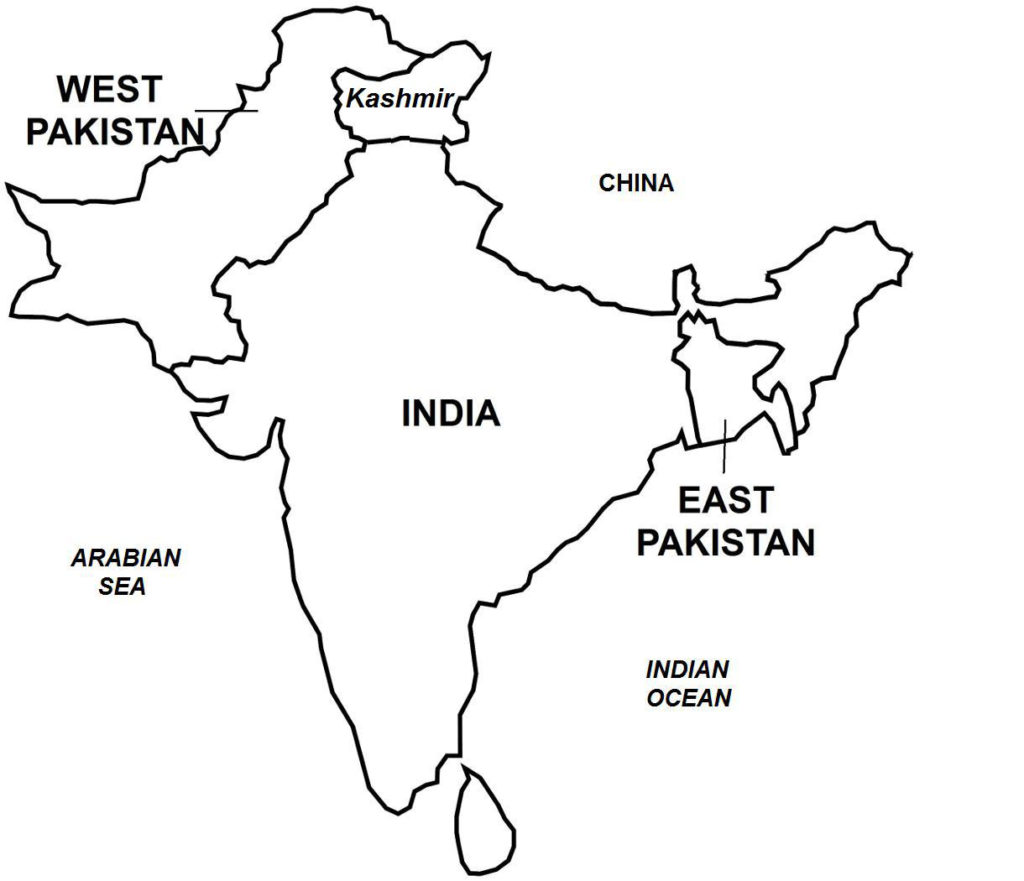On September 13, 1948, the Indian Army invaded the state of Hyderabad. Four days later, the Nizam (monarch) of Hyderabad surrendered. In November 1948, he signed the Instrument of Accession to India, and the independent state of Hyderabad ceased to exist.
Britain approved the Indian Independence Act in July 1947, partitioning British India into two new independent dominions: India and Pakistan. On August 14, 1947, Pakistan declared independence, and the next day, India also declared its independence.

At the time of partition into India and Pakistan, there also existed in the Indian subcontinent semi-autonomous polities called “princely states”, numbering 565 and covering 40% of the territory, and comprising 23% of the population. Before the British withdrew, they offered the princely states two options: to be incorporated politically and geographically into either India or Pakistan, or to revert to their pre-colonial status as independent political entities. A great majority of the Princely States took the option suggested by the British and joined either one of the two new countries, but most with India with whom they shared a common border as well as religious ties.
Hyderabad, which shared all its borders with India but none with Pakistan, was led by a Muslim monarch (the Nizam) who ruled over a largely Hindu population. Hyderabad was also the wealthiest and most militarily powerful of the princely states and the Nizam owned 40% of all Hyderabad lands. Not wanting to accede to Hindu-majority India, the Nizam declared Hyderabad’s independence in August 1947. However, India was determined to integrate Hyderabad with itself, averse to the presence of a hostile neighbour. Negotiations between the two sides were held from November 1947 to June 1948, which failed to reach an agreement.
Ultimately, the Indian government was prompted to take military action because of what it perceived were violations of the Hyderabad state: carrying out relations with Pakistan, interfering with Indian traffic at its borders, and most seriously, building up paramilitary force numbering 200,000 irregulars (“razakars”) apart from the state force of 22,000 troops.
In the immediate aftermath of the Indian invasion, widespread communal violence broke out with Hindus attacking Muslims. Executions, murders, rapes, and lootings were widespread. Some 30,000-40,000 were killed, with one estimate putting the figure at 200,000 or higher.
(Partition of India; taken from Wars of the 20th Century – Volume 3)
In the Indian subcontinent (Map 12), which was Britain’s prized possession since the 1800s, a strong nationalist sentiment had existed for many decades and had led to the emergence of many political organizations that demanded varying levels of autonomy and self-rule. Other Indian nationalist movements also called for the British to leave immediately. Nationalist aspirations were concentrated in areas with direct British rule, as there also existed across the Indian subcontinent hundreds of semi-autonomous regions which the British called “Princely States”, whose rulers held local authority with treaties or alliances made with the British government. The Princely States, however, had relinquished their foreign policy initiatives to the British in exchange for British military protection against foreign attacks. Thus, the British de facto ruled over the Princely States.
Lord Mountbatten also settled the fates of the Princely States, which accounted for about one-third of the area of the Indian subcontinent. In a plenary meeting with the heads of the Princely States in July 1947, the Governor-General offered them two options: to be incorporated politically and geographically into either India or Pakistan, or to revert to their pre-colonial status as independent political entities. Lord Mountbatten, however, cautioned the Princely States against taking the second option, saying that they risked being overwhelmed by their two new giant neighbors, India and Pakistan.
A great majority of the Princely States took the option suggested by Lord Mountbatten and joined either one of the two new countries, but most with India with whom they shared a common border as well as religious ties. Two Princely States, Manipur and Tripura, opted for independence in 1947, but agreed to be incorporated into India two years later. Hyderabad, with a Muslim ruler and a majority Hindu population, and geographically located inside India, declared independence. In 1948, India invaded Hyderabad and subsequently annexed the former Princely State. Junagadh also had a Muslim ruler and a predominantly Hindu constituency, and chose to be assimilated into Pakistan but without whom it shared a border. An uprising soon broke out among Hindus, whereupon the Indian Army invaded Junagadh, forcing the Muslim ruler to flee into exile. In a plebiscite that later was held in Junagadh, the overwhelming majority of voters chose to be incorporated into India. Soon thereafter, India annexed Junagadh.
At partition, the Princely State of Kashmir became independent but found itself geographically straddled between India and Pakistan. Kashmir’s Hindu monarch, who ruled over a predominantly Muslim constituency, chose to remain politically neutral. Both India and particularly Pakistan, however, wanted to annex Kashmir, and thus exerted pressure on the Kashmiri monarch. In October 1947, a revolt broke out in Kashmir, triggering the Indian-Pakistani War of 1947, which was the first of three major wars fought between India and Pakistan over Kashmir and the start of a long-standing dispute that continues to this day.
